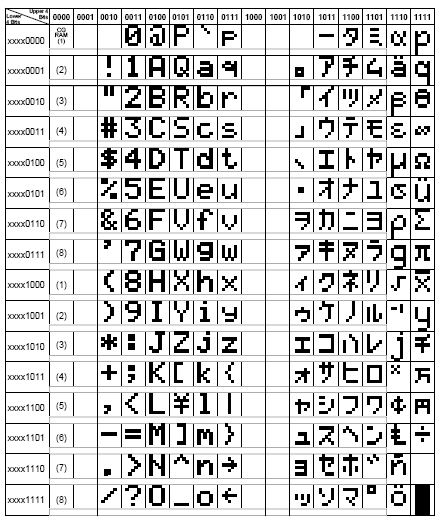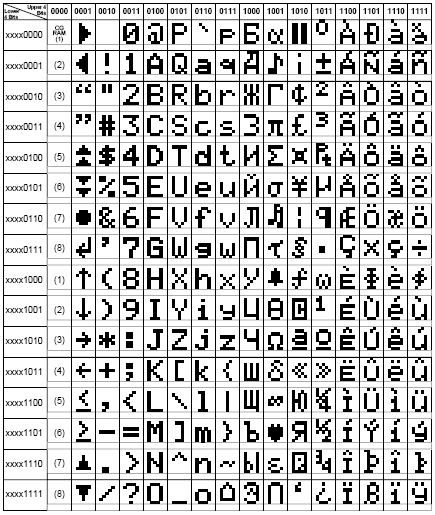LCD Interfacing Tutorial: Basics of Alphanumeric LCD
DDRAM - Display Data RAM
Display data RAM (DDRAM) stores display data represented in 8-bit character codes. Its extended capacity is 80 X 8 bits, or 80 characters. The area in display data RAM (DDRAM) that is not used for display can be used as general data RAM. So whatever you send on the DDRAM is actually displayed on the LCD. For LCDs like 1x16, only 16 characters are visible, so whatever you write after 16 chars is written in DDRAM but is not visible to the user.Figures below will show you the DDRAM addresses of 1 Line, 2 Line and 4 Line LCDs.

Figure 2: DDRAM Address for 1 Line LCD

Figure 3: DDRAM Address for 2 Line LCD

Figure 4: DDRAM Address for 4 Line LCD
CGROM - Character Generator ROM
Now you might be thinking that when you send an ascii value to DDRAM, how the character is displayed on LCD? so the answer is CGROM. The character generator ROM generates 5 x 8 dot or 5 x 10 dot character patterns from 8-bit character codes (see Figure 5 and Figure 6 for more details). It can generate 208 5 x 8 dot character patterns and 32 5 x 10 dot character patterns. Userdefined character patterns are also available by mask-programmed ROM.
Figure 5: LCD characters code map for 5x8 dots

Figure 6: LCD characters code map for 5x10 dots
As you can see in both the code maps, the character code from 0x00 to 0x07 is occupied by the CGRAM characters or the user defined characters. If user want to display the fourth custom character then the code to display it is 0x03 i.e. when user send 0x03 code to the LCD DDRAM then the fourth user created charater or patteren will be displayed on the LCD.
CGRAM - Character Generator RAM
As clear from the name, CGRAM area is used to create custom characters in LCD. In the character generator RAM, the user can rewrite character patterns by program. For 5 x 8 dots, eight character patterns can be written, and for 5 x 10 dots, four character patterns can be written. Later in this tutorial i will explain how to use CGRAM area to make custom character and also making animations to give nice effects to your application.BF - Busy Flag
Busy Flag is an status indicator flag for LCD. When we send a command or data to the LCD for processing, this flag is set (i.e BF =1) and as soon as the instruction is executed successfully this flag is cleared (BF = 0). This is helpful in producing and exact ammount of delay. for the LCD processing.To read Busy Flag, the condition RS = 0 and R/W = 1 must be met and The MSB of the LCD data bus (D7) act as busy flag. When BF = 1 means LCD is busy and will not accept next command or data and BF = 0 means LCD is ready for the next command or data to process.
Instruction Register (IR) and Data Register (DR)
There are two 8-bit registers in HD44780 controller Instruction and Data register. Instruction register corresponds to the register where you send commands to LCD e.g LCD shift command, LCD clear, LCD address etc. and Data register is used for storing data which is to be displayed on LCD. when send the enable signal of the LCD is asserted, the data on the pins is latched in to the data register and data is then moved automatically to the DDRAM and hence is displayed on the LCD.Data Register is not only used for sending data to DDRAM but also for CGRAM, the address where you want to send the data, is decided by the instruction you send to LCD. We will discuss more on LCD instuction set further in this tutorial.